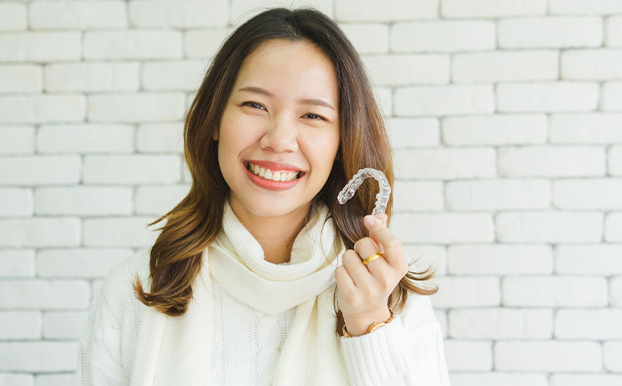Does Invisalign Really Work

Is Invisalign truly effective?
Invisalign Research
Invisalign is the leading clear aligner system globally, with over two decades of innovation and a track record of delivering smiles to over nine million individuals, including 2.3 million teens. Each patient receives a personalized set of aligners made with a patented material, utilizing virtual modeling software and rapid manufacturing processes for mass customization.
For optimal results, patients are advised to wear their aligners for 20 to 22 hours daily, only removing them when necessary, such as when eating or drinking (excluding cool water). Regular visits to both the dentist and orthodontist are essential for maintaining oral health and ensuring the success of the treatment. The dentist can address any oral health issues that may arise, reducing the risk of irritation from Invisalign, while the orthodontist can monitor progress and provide new aligners as needed.
“With over twenty years of innovation on its side, it has delivered smiles to over nine million people and over 2.3 million teens.”
Who Uses Invisalign
“While orthodontic treatment is commonly associated with youth, Invisalign is appropriate for both teenagers and adults.”
Important Information About Invisalign
Invisalign is a great option for many teenagers and adults, especially those with mild to moderately crowded teeth or minor spacing issues. However, metal braces may be more effective for those seeking precise results. It is important for anyone considering Invisalign to address any gum disease or dental issues before starting treatment.
Patients with more complex crowding or spacing issues, such as severe underbites, overbites, or crossbites, may require more intensive treatment that Invisalign may not be able to provide. Additionally, Invisalign is generally not recommended for children, as their mouths are still developing and their teeth are constantly changing, making clear aligners less predictable for them.
"Invisalign is most suitable for patients with mild to moderate teeth crowding."
Comparing Invisalign and Traditional Braces
Invisalign and traditional braces have several differences. One major distinction is in their appearance. Invisalign is nearly invisible when worn, making it a great option for those who are concerned about how braces will look. Additionally, Invisalign aligners can be removed for eating and oral hygiene, adding to their convenience.
On the other hand, traditional braces consist of brackets and wires that apply gentle pressure to gradually shift the teeth. The brackets are fixed to the teeth and cannot be removed, which can make them less comfortable and more challenging to maintain oral hygiene. Patients with traditional braces also need to be cautious about what they eat to avoid damaging the brackets or getting food stuck between them.
“When used appropriately, Invisalign is almost entirely inconspicuous — making it perfect for more self-conscious patients.”
Improving Your Lifestyle with Invisalign
Invisalign offers the advantage of requiring minimal lifestyle changes. Patients simply need to switch out their aligners every one or two weeks and pick up a new set every six to eight weeks at the office. In most cases, Invisalign patients have fewer orthodontist visits compared to those with braces.
To ensure safe completion of Invisalign treatment, patients should take proper care of their aligners to prevent staining or other issues. This includes rinsing the aligners nightly, gently brushing them with a soft-bristled toothbrush, and rinsing them whenever they are removed. Aligners should only be taken out when necessary, such as when eating, brushing, or drinking anything other than cool water. Patients participating in high-contact sports should consult with Cedar Grove Dental Group to determine if it is safe to keep the aligners in while playing.




